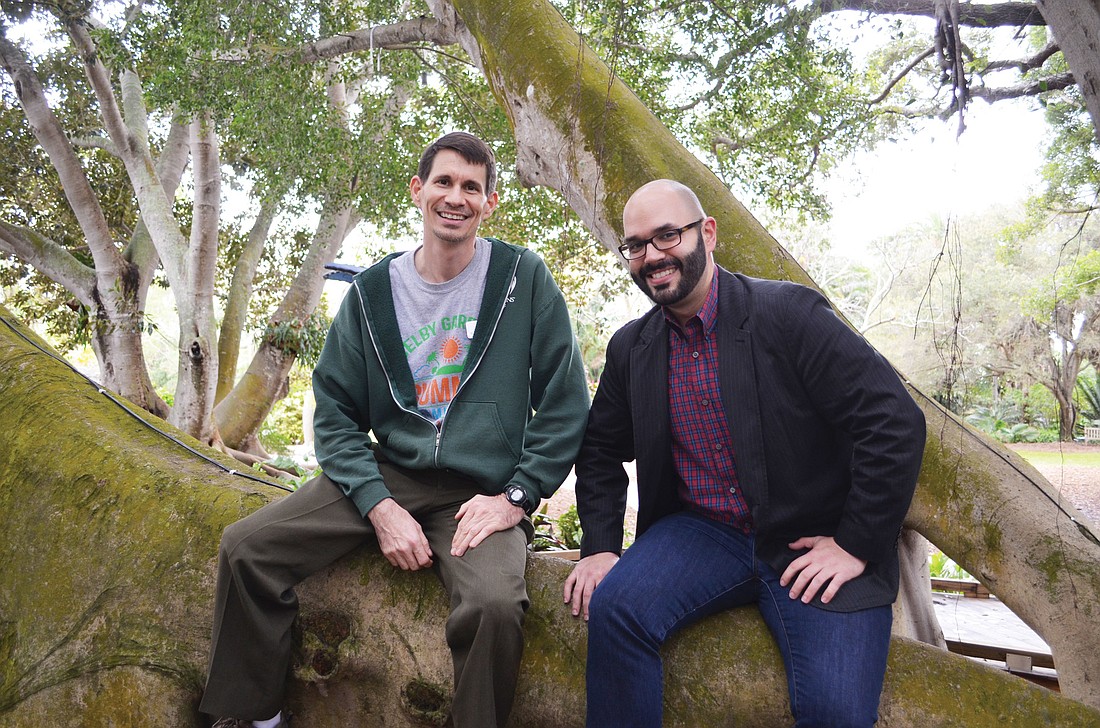- November 24, 2024
-
-
Loading

Loading

Marie Selby Botanical Gardens’ mission of intimate and interactive plant appreciation and conservation is on full display in its main tropical plant greenhouse. The senses are overloaded with one step through the door. A dazzling bouquet of vivid purple, orange and yellow attracts the eye, while an intoxicating collection of smells welcomes you.
Then, there’s the music. Stevie Wonder's “Signed, Sealed, Delivered” plays through the greenhouse's speakers, followed by other Motown staples.
The gardens’ fun, playful and inviting atmosphere is in stark contrast to the traditional and stoic botanical gardens across the country. New Selby Gardens CEO Jennifer Rominiecki is quite familiar with the “museum of plants” feel, such as at the New York Botanical Gardens, where she served as vice president for institutional advancement and special assistant to the president for 15 years. Although she was fascinated with the New York Botanical Gardens’ role as a plant curator, the opportunity to work at Selby Gardens, with its high investment in research, conservation as well as youth education and community involvement, was a chance she couldn’t pass up.
Rominiecki, who started her new job Monday, hopes to ensure Selby Gardens continues as not only a plant sanctuary and research facility but also as an interactive, living and communal botanical experience.
“This place is a healing and spiritual thing for people,” says Director of Horticulture Mike McClaughlin. “People bond with the Selby Garden, and this becomes a respite from life for them.”
According to Rominiecki, her first order of business is to build on the strong foundation that has already been laid by meeting with local professionals, organizations and community leaders.
“I am interested in helping take Selby Gardens to the next level, and that means looking at how we can further expand on what’s working,” she says.
 The Marie Selby Botanical Gardens have been providing an oasis for plant enthusiasts, researchers and curious visitors alike for nearly 40 years. The gardens opened to the public in July 1975 and have become a staple of the Sarasota community.
The Marie Selby Botanical Gardens have been providing an oasis for plant enthusiasts, researchers and curious visitors alike for nearly 40 years. The gardens opened to the public in July 1975 and have become a staple of the Sarasota community.
Thousands of exotic plant varieties will be on display and for sale at the gardens’ annual Plant and Garden Festival Feb. 21 and Feb. 22. The scale of this plant extravaganza can be adequately summarized by the gardens’ BYOW policy: Bring your own wheelbarrow. Vendors will line the large lawn with colorful and rare plant varieties.
Plant societies and horticultural experts will also be in attendance to answer any gardening queries. And for the most casual of gardeners and their families, there will be local food vendors and family activities around the garden’s Children’s Rainforest Garden. But even the non-plant activities still revolve around the garden’s mission of conservation and environmental awareness with Darwin’s on 4th hosting a farm-to-fork food demonstration.
“I like to say when we have events here they take on a life of their own,” says Roger Capote, special events manager at Selby Gardens. “The way we coordinate events is to organize organically around the garden.”
Capote orchestrates the large public interactions such as the plant and garden festival and the popular holiday “Lights in Bloom” celebration that illuminates the existing plants and trees with dazzling constellations of lights and designs. In addition, Capote says that though that it isn’t hard to sell community and private events at the garden due to its aesthetic and natural beauty, the real accomplishment is to make events that appeal to everyone and not just some.
“This is the easiest job I’ve ever had,” says Capote, “but you need to open the garden to all different kinds of groups. I need to orchestrate events that appeal to families and older donors as well as young people. I’m always trying to keep the events current.”
In tandem with Capote, McClaughlin ensures that events maintain the root of Selby Gardens’ mission: appreciation of plants and biodiversity.
“We are a small and intimate garden,” says McClaughlin. “You’re nose to nose with these orchids and trees, whereas other public gardens are almost plant museums. We’re a research-based garden, but one of our real goals is to reconnect people with nature.”
McClaughlin and his staff work daily to ensure that the thousands of resident plants and flowers are maintained. Armed with his buzzing walkie-talkie, McClaughlin is a combination of handyman and scientist fixing any structural or maintenance issues on the property while noting the biological nuances of the thousands of plant species.
“You never really finish a garden,” McClaughlin says. “We’re constantly renovating our gardens. It’s like the natural replacement of cells in our bodies.”
This article was changed at 10 a.m. Feb. 11 to correct Jennifer Rominiecki's title at the New York Botanical Gardens.
